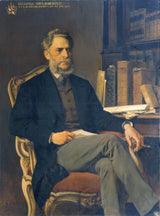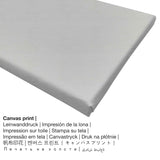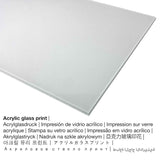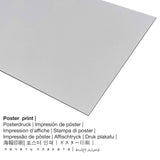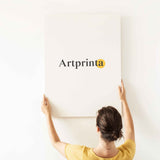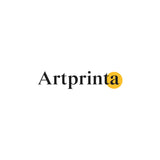Augusts Eizenmengers, 1882. gads - Leo Grafs Tūns-Hohenšteins - tēlotājas mākslas druka
PVN iekļauts. Piegāde aprēķināta Pie izrakstīšanās
Informācija par produktu
In 1882 August Eisenmenger made the 19th gadsimts work of art. The original version measures the size: 151 x 112 cm - rāmis: 190 x 152 x 15 cm un tika krāsots ar barotni eļļa uz audekla. Oriģinālajam mākslas darbam ir šāds uzraksts: signed and dated lower left: A.EISENMENGER / PINXIT 1882; Name top left: LEO COMES TUNA-HOHENSTEIN / S · C · R · AP · MAJ · · ACT CONS INT · ET · CAM · AET · · SUAE LXXI.. The piece of art is part of the Belvedere's digital art collection in Vīne, Austrija. Ar pieklājību no © Belvedere, Vīne, inventāra numurs: 228 (licencēts: publisks īpašums). The creditline of the artwork is the following: order with the artists and Purchase from by k. k. Ministry of Culture and Education in 1889. In addition to this, the alignment of the digital reproduction is portrets ar sānu attiecību 3: 4, kas nozīmē, ka garums ir par 25% īsāks nekā platums. The painter August Eisenmenger was a European artist, whose art style was primarily Realism. The Realist artist was born in 1830 Vīnē un nomira gada vecumā 77 gadā Vīnē 1907. gadā.
Iegūstiet produkta materiāla variantu
Katram produktam mēs piedāvājam dažādu izmēru un materiālu klāstu. Mēs ļaujam izvēlēties iecienītāko izmēru un materiālu starp šīm produktu individualizācijas iespējām:
- Audekla druka: A printed canvas, not to be mistaken with a canvas painting, is a digital image applied directly on canvas. It makes a unique look of three dimensionality. Your canvas print of your favorite work of art will provide you with the opportunity to transform your new art print into a large size artwork like you know from galleries. The advantage of canvas prints is that they are relatively low in weight, which implies that it is quite simple to hang up your Canvas print without the help of additional wall-mounts. Canvas prints are suited for any type of wall.
- Drukāt uz spīdīga akrila stikla (ar īstu stikla pārklājumu): An print on acrylic glass, often referred to as a print on plexiglass, will convert your favorite artwork into décor. Furthermore, it offers a distinct alternative to canvas or dibond fine art replicas. The great benefit of a plexiglass art print is that contrasts and smaller color details become exposed with the help of the very fine tonal gradation of the picture. Our acrylic glass protects your selected fine art print against light and heat for between 40-60 years.
- Alumīnija apdruka (alumīnija dibons): An Aluminium Dibond print is a print material with an impressive effect of depth, which creates a contemporary look by having a non-reflective surface. A direct Aluminium Dibond Print is your perfect introduction to fine art reproductions with alu. For the Aluminium Dibond option, we print the artpiece onto the aluminium composite surface. The bright and white sections of the original work of art shine with a silky gloss, however without glare.
- Iespiests plakāts (audekla materiāls): A poster print is a printed canvas with a fine structure on the surface. Please bear in mind, that depending on the absolute size of the poster we add a white margin of around 2-6cm around the print motif in order to facilitate the framing with your custom frame.
Svarīga piezīme: We try whatever we can in order to depict the art products as accurately as possible and to display them visually on the respective product detail pages. Nevertheless, the tone of the printing material and the printing might differ to a certain extent from the presentation on the device's monitor. Depending on your settings of your screen and the condition of the surface, not all color pigments are printed one hundret percent realistically. Bearing in mind that all our fine art prints are processed and printed by hand, there might also be slight discrepancies in the motif's exact position and the size.
Informāciju par produktu
| Rakstu kategorija: | mākslas darbs |
| Reprodukcijas metode: | reproducēšana digitālā formātā |
| Ražošanas metode: | UV tiešā druka |
| Izcelsme: | Vācu produkcija |
| Krājuma veids: | pēc pieprasījuma |
| Paredzētais lietojums: | sienas māksla, mākslas reprodukciju galerija |
| Orientācija: | portreta formāts |
| Attēla malu attiecība: | garums līdz platumam 3: 4 |
| Mutiskā tulkošana: | garums ir par 25% īsāks nekā platums |
| Materiāli, kurus varat izvēlēties: | plakātu druka (audekla papīrs), akrila stikla apdruka (ar īsta stikla pārklājumu), metāla apdruka (alumīnija dibons), audekla druka |
| Audekls uz nestuvju rāmja (audekla druka) varianti: | 30x40cm - 12x16 ", 60x80cm - 24x31", 90x120cm - 35x47 ", 120x160cm - 47x63" |
| Akrila stikla apdrukas (ar īstu stikla pārklājumu) izmēru opcijas: | 30x40cm - 12x16 ", 60x80cm - 24x31", 90x120cm - 35x47 ", 120x160cm - 47x63" |
| Plakātu drukas (audekla papīrs) izmēri: | 30x40cm - 12x16 ", 60x80cm - 24x31", 90x120cm - 35x47 " |
| Dibond drukas (alumnija materiāla) izmēru opcijas: | 30x40cm - 12x16 ", 60x80cm - 24x31", 90x120cm - 35x47 " |
| Rāmis: | Lūdzu, ņemiet vērā, ka šim izstrādājumam nav rāmja |
Mākslas priekšmeta specifikācija
| Gleznas nosaukums: | "Leo Graf Thun-Hohenstein" |
| Mākslas darbu klasifikācija: | glezna |
| Vispārīgs termins: | modernā māksla |
| Laiks: | 19th gadsimts |
| Izveidots gadā: | 1882 |
| Aptuvenais mākslas darba vecums: | vairāk nekā 130 gadus vecs |
| Oriģināla mākslas darba vide: | eļļa uz audekla |
| Sākotnējie izmēri: | 151 x 112 cm - rāmis: 190 x 152 x 15 cm |
| Paraksts uz mākslas darbu: | signed and dated lower left: A.EISENMENGER / PINXIT 1882; Name top left: LEO COMES TUNA-HOHENSTEIN / S · C · R · AP · MAJ · · ACT CONS INT · ET · CAM · AET · · SUAE LXXI. |
| Muzejs / kolekcija: | Belvedere |
| Muzeja vieta: | Vīne, Austrija |
| Muzeja vietne: | www.belvedere.at |
| Licences tips: | publiski |
| Pieklājīgi no: | © Belvedere, Vīne, inventāra numurs: 228 |
| Mākslas darba kredītlīnija: | pasūtījums ar māksliniekiem un pirkums no Kultūras un izglītības ministrijas 1889. gadā |
Vispārīga informācija par mākslinieku
| Mākslinieks: | Augusts Eizengers |
| Pseidonīmi: | eisenmenger, eisenmenger aug., a. eisenmenger, August Eisenmenger, Eisenmenger August |
| Dzimums: | vīrietis |
| Mākslinieka tautība: | Austrijas |
| Darbs: | gleznotājs |
| Izcelsmes valsts: | Austrija |
| Klasifikācija: | mūsdienu mākslinieks |
| stili: | Reālisms |
| Nomira gadu vecumā | 77 gadiem |
| Dzimšanas gads: | 1830 |
| Dzimtā vieta: | Vīne |
| Nāves gads: | 1907 |
| Nāves vieta: | Vīne |
© aizsargāts ar autortiesībām | Artprinta (www.artprinta.com)
Oriģinālas mākslas darbu specifikācijas muzeja vietnē (© Autortiesības - Belvedere - www.belvedere.at)
Leopold (Leo) Graf von Thun und Hohenstein, born on 7 April 1811 Decin, died on 17 December 1888 in Vienna, was an Austrian politician and author. He was one of the fathers of political Catholicism. After studying law at the Charles University in Prague went from Thun in 1836 in the Austrian civil service. 1848 appointment as Gubernialpräsidenten in Bohemia and 1849. He was appointed as Minister of Culture and Education. During his term of office lasting until 1860 reformed Thun the Austrian education system. formed a basis for the proposals made by Franz S. Exner in the sense of religious tolerance. He introduced the university autonomy in Austria and structured the Vienna Academy of Sciences new. Scientists Protestant or Jewish faith received authorization to teach at the universities and well-known foreign scholars were appointed to the country. The Evangelical theological educational institution received the status of a faculty, the Austrian Institute of Historical Research was converted Nationale des Chartes into a modern training center modeled on the Ecole. Thun was one of the fathers of the Concordat of 1855, which transferred the Catholic Church full capabilities of the state. As chairman of the Catholic conservatives he became involved in 1860 unsuccessfully for a creation of a federal Austrian state with a large degree of autonomy of the entities. On order of k. k. Ministry of Culture and Education copied Eisenmenger his portrait of tuna. This second version was for the mansion determined (see. Inv 156). [Dietrun Otten, 2009]

